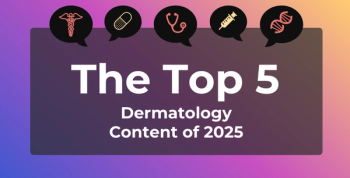
Researchers Establish, Validate Prognostic Model for Uveal Melanoma
The model consists of 3 metabolism-related genes—carbonic anhydrase 12, acyl-CoA synthetase long-chain family member 3, and synaptojanin 2— that the researchers said could potentially be used as biomarkers and treatment targets in the disease.
Authors of a
The group underscored the utility of their metabolic signature-based model, which they say could also allow for the identification of high-risk patients who may benefit from more frequent follow-up strategies.
“Although several risk factors for UM have been found, these common traditional clinical characteristics, such as age, gender, and staging classification, cannot accurately predict the prognosis and survival of UM patients,” explained the group. “Therefore, the identification of novel prognostic biomarkers is urgent and of utmost importance.”
The model consists of 3 metabolism-related genes—carbonic anhydrase 12, acyl-CoA synthetase long-chain family member 3, and synaptojanin 2— that the researchers said could potentially be used as biomarkers and treatment targets in the disease.
The researchers originally identified 861 gene signatures from patients in The Cancer Genome Atlas (TCGA) database, 23 of which showed associations with OS among the 80 patients in a univariable Cox regression. Using stepwise regression, the researchers were able to narrow the optimized prognostic model to the 3 chosen genes. The model also consists of 3 clinical parameters—age, gender, and metastasis staging.
Testing the model, the researchers showed that the risk score was an independent prognostic factor for survival after adjusting for confounding factors in both the TCGA cohort (hazard ratio [HR] = 3.967; 95% CI, 1.761-8.937, P<.001) and the validation cohort of 63 patients from the Gene Expression Omnibus (GEO) database (HR = 14.013; 95% CI, 2.874- 68.332, P<.001).
Patients who were considered high risk had significantly inferior prognosis, with a higher proportion of mortality among high-risk patients in the TCGA cohort (35% vs 6%) and GEO cohort (71% vs 0%) compared with patients considered low risk.
“Our newly established model offers some advantages as compared with the existing UM prognostic model (eg, visualized nomograms and online calculators facilitate informed treatment and management decisions for ophthalmologists and patients),” said the researchers, writing of the strengths of their model. “Second, other models need to examine 9, 10, 22, or 18 genes or 5 alternative splicing events, whereas only 3 genes were required for prediction by using our model, thus enabling greater convenience and speed. Third, calibration and discrimination analyses were implemented to prove the predictive power of our model and make it more accurate for prediction.”
The researchers did note several limitations of their study, including the lack of inclusion of certain risk factors in their model establishment, such as skin color and radiation exposure.
Reference:
Shi K, Li X, Zhang J, Sun X. Development and validation of a novel metabolic signature-based prognostic model for uveal melanoma. Transl Vis Sci. 2022;11(5):9. doi:10.1167/tvst.11.5.9
Newsletter
Stay ahead of policy, cost, and value—subscribe to AJMC for expert insights at the intersection of clinical care and health economics.








